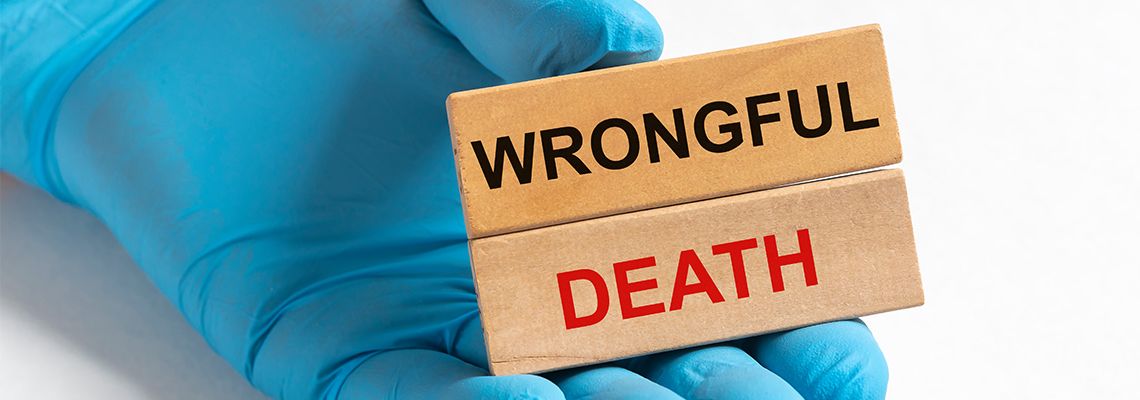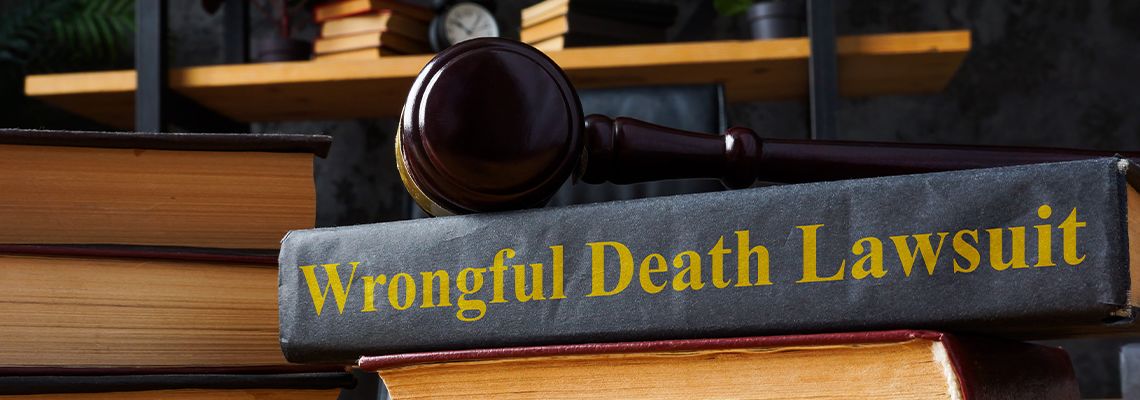In our fast-paced, technology-driven culture, distractions are everywhere. One of the most dangerous places for distractions is behind the wheel. Distracted driving has become one of the leading causes of motor vehicle accidents across the US, resulting in devastating consequences for victims and their families.

How to Prove Negligence in a Wrongful Death Case
Wrongful death litigation asks families to balance grief with the discipline of proof. Because a wrongful death claim hinges on showing negligence, each legal element—duty, breach, causation, and damages—must appear in sharp focus before settlement talks even begin.
Corrington Law Firm in New Orleans, Louisiana, helps clients meet that challenge by gathering decisive evidence, choosing persuasive witnesses, and shaping both into a narrative judges and juries can trust.
The Building Blocks of Negligence
Negligence functions like a four‑link chain. If any link breaks, liability slips away, so every point must be documented in a way that flows naturally into the next.
Duty of care: The defendant had a legal obligation to act with reasonable caution.
Breach of duty: Conduct fell below that standard, exposing others to harm.
Causation: The breach directly produced the fatal injury.
Damages: Economic and emotional losses flowed from the death.
Collecting proof in this order walks jurors from accepted rules to the human cost of breaking them and keeps the defense from picking the case apart.
Establishing Duty In Louisiana Courtrooms
Duty arises from relationships most people take for granted. Drivers must obey traffic laws, physicians must follow accepted treatment protocols, and property owners must fix known hazards. Louisiana judges decide duty by asking whether a reasonable person in the defendant’s position would foresee danger.
A professional attorney answers that question by citing statutes, industry handbooks, and prior rulings that set clear behavioral expectations. Starting with duty grounds the claim in widely understood rules, giving jurors a benchmark for the conduct that follows.
Demonstrating Breach of That Duty
Once duty is clear, the next task is showing where the defendant slipped. Breach often hides in overlooked details—a skipped safety inspection, distracted driving minutes before impact, or a medication dosage error.
Lawyers collect maintenance logs, cell‑phone records, and surveillance footage to spotlight the lapse. When technical language threatens to confuse, they can translate procedures into plain English so jurors see exactly how the defendant fell short of the obligation already established.
Proving Causation Beyond Question
Causation connects the breach to a fatal outcome. Medical charts, autopsy reports, and accident‑reconstruction models draw that line.
Imagine brake‑line data revealing no pressure seconds before a crash; pair it with skid‑mark measurements and eyewitness accounts, and the link between poor maintenance and wrongful death becomes undeniable. The Corrington Law Firm layers these sources into a single timeline that shuts down theories blaming unforeseeable events or the victim’s own behavior.
Calculating the Full Measure of Damages
Compensation isn’t automatic; it flows only when every category of loss is backed by clear documentation and credible projections. Legal professionals begin with the immediate out‑of‑pocket costs families face, then build forward with the following aspects:
Medical expenses: Emergency care, surgeries, and hospice services incurred before death.
Funeral costs: Burial, memorial, and related arrangements the family covered or still owes.
Lost earnings: Income the deceased would’ve provided over a normal working life.
Household services: Childcare, home repairs, and elder support that no longer exist.
Emotional suffering: Loss of guidance, affection, and daily companionship relatives once enjoyed.
All of these factors come together to form a clearer picture of how much compensation is appropriate.
Evidence That Carries the Most Weight
Some proofs resonate more strongly than others, so attorneys pursue sources judges trust and juries remember.
Official reports lock in facts before memories fade. Digital data—dash‑cam video, phone logs, electronic medical records—time‑stamp critical moments. Eyewitness statements add human detail no sensor can replicate. Industry guidelines reveal the precise standard the defendant ignored.
Securing these items early prevents data loss and blocks arguments that key information no longer exists.
Handling Comparative Fault Allegations
Louisiana’s pure comparative fault rule reduces damages by any percentage of blame assigned to the deceased. Defense counsel often leans on this doctrine to trim payouts. By locking down timelines, electronic records, and specialist opinions at the outset, the Corrington Law Firm keeps fault percentages anchored in evidence rather than speculation, protecting the claim’s full value.
When multiple parties share liability—such as a careless driver and a negligent parts manufacturer—motion practice is used to clarify each share of fault before trial, blocking attempts to shift blame during closing arguments. This proactive approach preserves the claim’s full value and strengthens negotiating power at the settlement table.
Immediate Steps That Strengthen a Future Claim
Prompt action preserves proof that can vanish within days. Families can take these measures while the legal process ramps up:
Collect official documents: Request police, coroner, or workplace records before they move into archives.
Secure physical items: Store damaged vehicles, machinery, or clothing without cleaning or repair.
Write personal recollections: Record timelines and conversations while details remain sharp.
Delay insurer interviews: Decline recorded statements until legal counsel reviews the situation.
Consult counsel promptly: Early guidance meets filing deadlines and targets investigations.
Each move locks down evidence and prevents costly gaps when insurers start questioning liability or damages.
The Power of Professional Witnesses
Technical subjects can overwhelm jurors, so witnesses who educate while they testify were chosen.
Accident engineers map vehicle paths and impact speeds. Medical specialists explain how injuries progressed from impact to death. Economists translate lifetime earnings into clear numbers. Their calm, precise language boosts credibility and keeps the jury’s focus on how negligence caused measurable harm.
Meeting Louisiana’s One‑Year Deadline
State law generally grants only twelve months from the date of death to file a wrongful death lawsuit. Gathering records, interviewing witnesses, and drafting pleadings devour the calendar, so starting early is vital.
Even within that year, delays can let evidence disappear or witnesses relocate. Quick engagement keeps the courthouse door open and preserves the strongest version of the story.
Transitioning From Investigation to Negotiation
When duty, breach, causation, and damages stand on solid ground, the case moves into valuation. A well‑organized file limits stalling tactics and nudges insurers toward fair numbers. Should talks stall, the same evidence converts into courtroom exhibits without last‑minute scrambling, preserving momentum and confidence.
Anticipating Common Defense Strategies
Defendants tend to recycle arguments: blaming preexisting conditions, questioning witness eyesight, or pointing at third‑party equipment failures. By identifying these moves early, Corrington Law Firm lines up counterproof—independent autopsy reviews, additional eyewitnesses, or product‑testing data—that restores focus on the real source of negligence.
Trials are won by narratives that flow logically. It’s important that testimonies sequence together so each witness hands the baton to the next, walking jurors from the moment duty arose to the instant damages became permanent. Visual aids—timelines, diagrams, and expense charts—keep technical points digestible and reinforce the chain of negligence step by step.
Preserving Digital Footprints Before They Fade
Modern wrongful death cases often hinge on electronic clues that can vanish with a single software update. Dash‑cam loops overwrite old footage, social‑media companies purge inactive accounts, and commercial servers cycle logs every few weeks.
Attorneys issue immediate preservation letters to drivers, employers, and service providers, warning that deletion invites court sanctions. Families can help by securing phones, laptops, and vehicle infotainment systems in their original state rather than scrolling through messages or photos.
Even a seemingly casual text—“Running late, traffic’s crazy”—may pinpoint location, mindset, or speed moments before a crash. Forensic professionals can clone hard drives and extract metadata without altering timestamps, safeguarding authenticity for trial.
Acting quickly keeps key data intact and blocks defense claims that files were edited or fabricated. In a digital age, preserving electronic footprints is as critical as storing damaged vehicles or collecting eyewitness statements.
Consult Legal Professionals Today
Building a persuasive wrongful death claim takes quick evidence gathering, strategic testimony, and courtroom storytelling. The Corrington Law Firm serves families across Louisiana, including New Orleans in Orleans Parish, Baton Rouge in East Baton Rouge Parish, Lafayette in Lafayette Parish, and nearby parishes. Reach out to protect your rights and pursue compensation.
RECENT POSTS
The sudden loss of a loved one leaves families in Louisiana grieving and wondering how they’ll cover household bills. Wrongful death damages range from future paychecks to bedtime stories never told, and each element carries its own proof requirements within Louisiana’s civil code.



